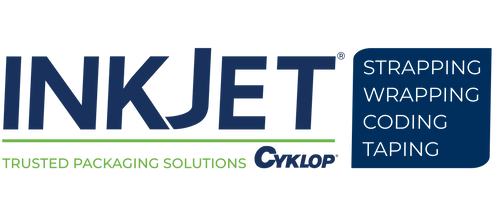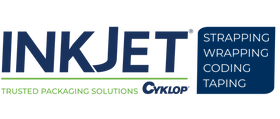What Types of Date Coding Should You Be Aware Of ij
As consumers, we often take for granted the date coding on our food, beverage, and medicine packaging. Communicating important production-related information, these labels are essential for both consumer education and manufacturer traceability. Beyond these utilitarian reasons, proper date coding is also often mandated by federal regulations and association rules, both of which depend on the specific industry in question. In fact, label misinformation and misprinting are two of the leading causes of product recalls by the FDA.
Especially if you’re trying to determine the best way to package and label your products, a basic knowledge of date coding practices is immensely helpful. At first glance, it can be difficult to make sense of the range of date labels and standards for product packaging. If this leaves you wondering what types of date coding you should be aware of, read on for a proper introduction on why and how to use various code forms.
The Different Types of Date Coding You Should Be Aware of
Depending on industry requirements, manufacturers use a number of different labels and codes to keep track of inventory and provide information to direct consumers or businesses that purchase the product shipment. Due to the diversity of these regulations, the subsequent codes differ in appearance depending on brand policy.
Some of the most common examples of these code forms include:
“Best by” Dates or Expiration Dates
Generally a rather self-explanatory label, these date codes are presented in a few different configurations based on producer preference and what makes the most sense for the specific product. Most commonly written as “Best by,” Use by,” or “Sell by,” these codes let businesses know the day, month, and year that the product should be pulled off of shelves. And they let consumers know when the product is past the window of safe use or consumption.
Configuration examples include:
- BB 11NOV2016
- SELL BY 06/03/16
- EXP 21/12/2014
Packaging Dates
Similar to “Best by” and “Sell by” dates, pack date labels vary in presentation from one product to another but still impart information to both consumers and distributors. Although FDA regulations specifically require only infant formula to bare packaging dates, other industries—such as producers of dairy, egg, beer, and poultry products—often voluntarily provide this information as freshness is paramount to merchandise quality.
While certain code forms are intuitive to read (e.g., BOTTLED 11/06/2020), some companies prefer to use Julian dates on their products—a form less recognizable to the casual consumer. This dating system displays the year of packaging alongside a continuous day count, beginning with January 1, rather than the month/day/year arrangement typically seen in the United States.
See the table below for some examples of Julian dates along with their month/day/year translation:
| Julian Date | Month/Day/Year Translation |
| 19005 | January 5, 2019 |
| 20141 | May 20, 2020 |
| 16032 | February 1, 2016 |
Lot Codes
More useful to manufacturers than consumers, lot codes or batch codes are unique letter-and-number combinations that are placed on products for record-keeping and inventory purposes. With lot numbers, companies are able to successfully complete quality control checks, determine expiration dates, and lead recalls when necessary. The form of these codes depends on how the information is most useful to the manufacturer.
Date Coding Practices by Industry
Although usage of the above codes does change from manufacturer to manufacturer, industries generally follow similar labeling protocols based on either regulations or association rules. For instance:
Food Packaging
Due to ever-expanding and increasingly complex supply chains, proper traceability is a prime concern for those operating in today’s food packing industry. After all, longer supply chains mean a higher contamination risk. Fortunately, proper date coding can streamline the recall process if necessary, keeping companies within FDA regulations.
Accordingly, food packing companies should include the following information on all of their products:
-
Tracking codes
-
“Best by” or “Best before” date
-
Batch or lot codes
-
Barcodes
Beverage Bottling and Canning
Similar to the food packaging industry, operations such as bottling plants and craft breweries need proper coding on their products to provide both consumer information and effective traceability.
Beverage companies should plan to use the same labels as listed above and make sure that their printers are able to successfully label packaging materials such as:
-
Plastic
-
Glass
-
Cans
-
Cartons
-
Paper
Pharmaceuticals
When compared to the beverage and food industries, pharmaceutical companies are subject to more demanding label regulations from the FDA. While each drug classification has its own unique requirement set, in general, these rules apply to how labels must stay legible and properly placed throughout storage, distribution, and use. Expect these labels to display information such as:
-
The official name of the product
-
Expiration date
-
Purpose of use
-
Directions for safe usage
-
Warnings of unintended side effects
Additionally, lot codes must also be applied for tracing purposes.
Technology for Reliable Date Coding and Labeling
Despite the differences between industry-specific date coding standards, having the right hardware for encoding these labels is a must across the board. This isn’t a place to cut corners with your coding standards or your tech. Just as you need to have the labeling best practices and requirements in mind for your industry, you also need to have the ideal combination of printers and inks that you can rely on for seamless operation in your production line. The sooner you can install a professional coding solution, the sooner you can put valuable attention in other directions to grow your business.
For more information on what types of date coding you should be aware of and which printers you can rely on to do the job, contact InkJet, Inc. online or by phone at (800) 280-3245.



